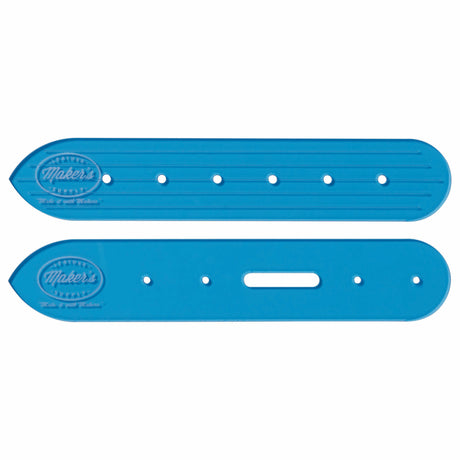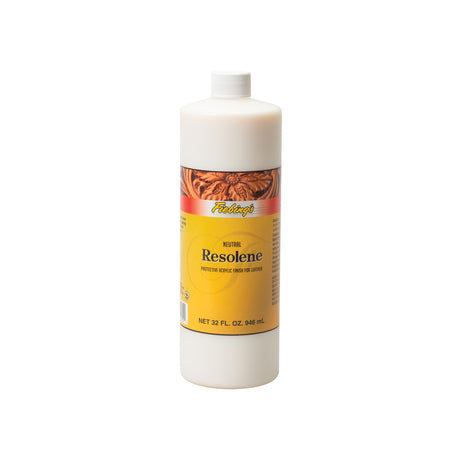Exploring Double Shoulder Leather: Characteristics and Best Uses

Did you know that understanding the different types of leather can significantly enhance your leather crafting projects? For those passionate about leatherworking, double shoulder leather is an exceptional material to incorporate into your toolkit. This guide will explore the unique properties and benefits of double shoulder leather, showcasing its versatility across various grades and finishes. From its flexibility to its durable nature, this leather type opens up endless possibilities for your creations. We'll also discuss the best applications for double shoulder leather and how to use it in a variety of leather craft projects. Whether you are a hobbyist or a seasoned professional, this comprehensive guide will provide you with valuable insights you need to get started!
Introduction to Double Shoulder Leather

Double shoulder leather is sourced from the shoulder area of the hide, making it a versatile choice for many leather projects. It is thicker, more durable, and provides superior flexibility compared to other leather cuts. Moreover, vegetable-tanned leather is eco-friendly and can age beautifully, developing a rich patina over time. The characteristics of double shoulder leather include:
- Thicknesses: In a variety of weights from 3-4 oz. up to 10-11 oz., double shoulder leather is available in thicknesses substantial enough to hold its shape while being flexible enough for crafting.
- Tanning Process: Vegetable-tanned options are treated with natural tannins, making them biodegradable and more environmentally friendly than chrome-tanned alternatives.
- Versatility: Available in various grades, including tannery run, #2 utility grade, and c-grade, each suited for different crafting needs.
These properties make double shoulder leather a popular choice among leather crafters.
Crafting with Double Shoulder Leather

When choosing leather for a project, consider what you need the material to achieve.
Here are some ideal applications for double shoulder leather:
1. Bags and Purses
Double shoulder leather is an ideal material for crafting bags and purses. Its durability ensures your items remain strong and functional while giving any design an attractive, rustic appearance. Various grades allow for flexibility in selecting a finish that suits your project, from smooth premium cuts to more rustic economy grades.
2. Belts and Straps
Double shoulder leather's robustness makes it perfect for belts and straps. It can withstand regular wear while maintaining its form, making it especially suitable for tooling and decorative designs. If done correctly, the finish and color will also withstand the test of time. Remember to reinforce buckle areas where there’s constant stress.
3. Wallets and Small Accessories

For smaller leather goods such as wallets, cardholders, and keychains, double shoulder leather provides a sturdy yet workable material that holds up to daily use. Veg tanned double shoulders are often preferred for these items due to its clean, smooth surface and ease of finishing.
4. Leather Journals & Home Décor Items
Double shoulder leather is also an excellent choice for journal covers, home décor items, and more. The thicker cuts provide structure, while the vegetable-tanned surface allows for beautiful stamping, tooling, and dyeing techniques.
Unique Characteristics of Veg-Tanned Leather
Veg-tanned leather, including double shoulder options, possesses unique characteristics that enhance your crafting experience.
Key benefits include:
Aging Process:
Veg-tanned leather develops a natural patina over time, enhancing the look and character of your crafted items.
All Natural:
Unlike chrome-tanned leather, vegetable-tanned leather does not contain harmful chemicals, making it safer for projects involving skin contact.
Dye Compatibility:
This leather readily absorbs dye, allowing you to personalize your projects easily.
Tip: Watch this video on various dye techniques for leather
Working with Double Shoulder Leather

When working with double shoulder leather, several techniques can maximize your crafting potential:
1. Tools:
Investing in the right tools is key. Cutting knives, round knives, skiving knives, and draw gauges ensure precise cuts and designs. Explore this video about essential leather tools for beginners:
2. Pattern Making:
Before starting a project, create templates to ensure accurate cuts and a clean finish.
3. Stitching Techniques:
Use hand-sewing or machine methods, depending on the project. A saddle stitch provides excellent durability and is preferred by many leatherworkers.
Check out this advanced saddle stitching technique:
4. Sealing and Finishing:
Sealing your leather work protects the surface from moisture and damage. Top coats, like Fiebing’s Resolene, can enhance the leather's aesthetics while providing a protective layer.
Sustainability and Ethical Considerations
Sourcing materials from sustainable suppliers fosters responsible leather crafting. As consumers grow increasingly concerned about environmental impacts, opting for eco-friendly materials is a strong selling point.
The Craft Community

You can connect with fellow leather crafters for inspiration and tips. Forums and social media groups often share experiences, techniques, and custom projects. Joint efforts help reduce the learning curve for beginners and provide seasoned artisans a platform to showcase their expertise.
Summary and Final Thoughts
Double shoulder leather offers numerous advantages for crafting enthusiasts and professionals alike. The unique features of veg-tanned leather—durability, aesthetic appeal, and sustainability—make it a primary material for various leathercraft projects. No matter your experience level, embracing this leather type can enhance your finished products.
So now what? If you’re ready to elevate your skills and incorporate high quality materials into your projects, explore Weaver Leather Supply’s range of double shoulder leather options.
Let your creativity shine and start creating projects with materials known for their beauty and longevity. Remember that the key to successful leatherworking is choosing the right material, and double shoulder leather may just be your best choice.















